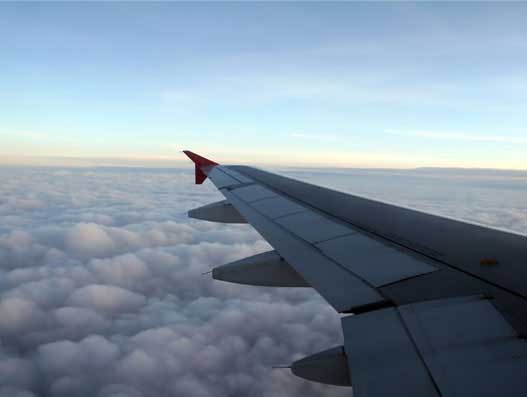
Air freight in niche markets In the wild blue yonder
While the potential is immense, there are a number of hurdles when your specialty is an isolated geographic location, small market or unique environment. With air freight opening up new export markets, what challenges do carriers in such niche markets face? Surya Kannoth… Poor infrastructure remains an interminable bottleneck in all levels of economic activity […]

While the potential is immense, there are a number of hurdles when your specialty is an isolated geographic location, small market or unique environment. With air freight opening up new export markets, what challenges do carriers in such niche markets face?
Surya Kannoth…
Poor infrastructure remains an interminable bottleneck in all levels of economic activity across niche markets, lament industry players. Also, many countries in the region need to change their air freight policies to boost business.
“Underdeveloped infrastructure is one of the main challenges of working in the niche markets we operate in. Working practices at some of our destinations can also cause issues, as can security. It is important to work with trusted partners and have local market expertise and contacts,” articulates Liana Coyne, chief operating officer at Coyne Airways.
Coyne Airways is an all-cargo airline providing scheduled services to the Caspian Sea region, Iraq, Afghanistan and Libya, in addition to charter services worldwide. The airline specialises in ‘difficult to reach’ destinations, including conflict and post-conflict zones.
The airline has been operating scheduled flights to and from the major military bases in Afghanistan for more than eight years, and has safely delivered over 60 million kilos of cargo till date.
Coyne serves destinations throughout the Gulf from its Dubai hub with connections from North America, Europe and Asia via a large network of interline partners.
Elaborating on the airline’s routes to niche destinations, Liana says, “We operate scheduled cargo flights to Georgia, Azerbaijan, Afghanistan, Iraq and the UAE using Antonov, Boeing, and Ilyshin aircraft, as required. We also serve destinations across Africa through three of the continent’s main hubs, Lagos, Nairobi and Johannesburg.”
The carrier also works with regional partners to link the Middle East, North America and Europe with a number of African destinations.
Coyne has recently restructured its business and now has five market-focused divisions, including Iraq, the Caspian and Central Asia, Afghanistan, Africa and contract logistics, which represent our five main business areas. “We have achieved an enviable record for our customers in some very difficult destinations, enabling them to realise the potential of these emerging markets,” she adds.
Another established player in the niche market segment is A.R.T Logistics. With a large clientele base consisting companies in the oil and gas industry, this Hong Kong-based freight forwarding and logistics company places a strong focus on Central Asia, Russia, CIS countries and Mongolia.
“Central Asia and the CIS countries are still showing growth or at least steady levels of trade. To add to it, infrastructure, political and administrative structures are developing and changing dynamically. This scenario offers us with challenges and opportunities at the same time,” explained Lawrence Wong, PR and communications manager, A.R.T Logistics.
Reiterating Liana Coyne’s statement, Wong says, “In certain regions and countries, poor infrastructure is often seen as a major challenge, and there is also a need to harmonise customs procedures across the region.”
Being positioned in the middle of the Americas, Panama’s geographic advantage enables Copa Airlines to access every major market in the Americas with narrowbody aircraft. The only exceptions would be smaller markets such as Alaska, Hawaii, northern Canada and Patagonia in the southern tip of South America which would not be viable even if they were within range of the carrier’s 737 fleet.
Currently, Copa Airlines has 22 737-700 and 737-800 passenger aircraft with an average capacity of 3,000 kilos of cargo per plane. Daily they transport some 75,000 kilos of cargo, mail and courier items.
Copa supports this passenger flight network with 737-200, 727-100 and 727-200 cargo aircraft, with scheduled flights to San José, Managua, El Salvador, Guatemala, Santo Domingo, Kingston, Bogotá, Cali, Medellin, and Guayaquil, covering charter cargo flight needs within the region.
“In continuance with our annual growth, we are adding frequencies to existing destinations and initiating operations to new destinations,” reveals Copa Airlines’ Fanny Gonzalez. She added that the airline sees a lot of demand coming in from Brazil. Gonzalez spoke about how custom restrictions in various regions pose a challenge for the airline.
Copa Airlines currently serves 69 destinations in around 30 countries with over 300 scheduled daily flights in North, South and Central America and the Caribbean.
Recognised for its leadership in international connectivity, punctuality, quality of service, it has one of the most modern fleets in the industry. The airline is also the main operator and owner of Colombian airline Aero Republica, currently known as Copa Airlines Colombia.

